As Kremlin Dismisses Swift Peace, Iskander Missiles Rain Death on Sumy’s Churchgoers, Killing 34 While Strikes Continue Across Ukraine
Summary of the Day – April 13, 2025
In a day that will be remembered for its brutal symmetry—worshippers gathered for Palm Sunday processions as missiles thundered toward Sumy’s crowded center—Russia unleashed one of its deadliest attacks in months. The ballistic strike tore through streets filled with churchgoers, leaving 34 dead and 117 wounded as bodies lay strewn among Palm Sunday willow branches. Meanwhile in Moscow, Kremlin spokesperson Dmitry Peskov dismissively rejected hopes for any “lightning-fast results” from peace negotiations, offering words as cold as the missiles his government launched. Across the country’s southern flank, Russian forces pounded Kherson with artillery and struck Odesa with drones, while territorial chess moves continued along the eastern front. The day also brought revelations of Chinese military officers observing from Russian-held territory, and European leaders responding with outrage while Washington offered sympathy but little concrete pressure.
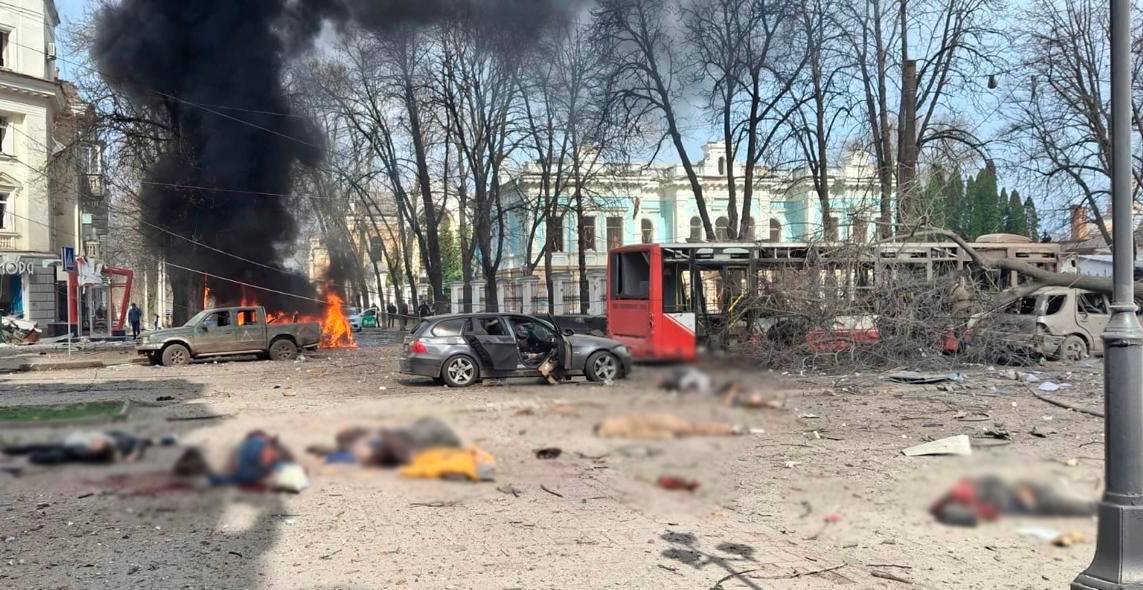 Aftermath of a Russian missile strike on the city of Sumy that killed dozens of civilians. (State Emergency Service of Ukraine/Telegram)
Aftermath of a Russian missile strike on the city of Sumy that killed dozens of civilians. (State Emergency Service of Ukraine/Telegram)
Holy Day Turned Hellscape: Missiles Shatter Palm Sunday in Sumy
The sacred observance of Palm Sunday transformed into scenes of apocalyptic devastation when two Iskander-M/KN-23 ballistic missiles, fingers of flame launched from Russian soil, descended upon Sumy’s city center shortly after 10:00 am. The missiles—equipped with cluster warheads designed to maximize civilian casualties—struck as streets filled with families returning from church services, their ceremonial willow branches still in hand.
 The aftermath of the Russian attack on Sumy that killed dozens on Palm Sunday. (State Emergency Service of Ukraine / Telegram)
The aftermath of the Russian attack on Sumy that killed dozens on Palm Sunday. (State Emergency Service of Ukraine / Telegram)
“Everything was black,” local journalist Anna Shpurik recounted, surveying a hellscape of charred vehicles, shattered windows, and scorched masonry. A public bus lay reduced to a skeletal, blackened husk—none of its passengers survived. The Congress Center of Sumy State University crumbled under the blast, while 48 buildings—including 28 residential structures, shops, and businesses—suffered significant damage.
Ukrainian military intelligence traced the murderous projectiles to their launch sites near Liski in Russia’s Voronezh Oblast and Lezhenki in Kursk Oblast, identifying the 112th Missile Brigade (1st Guards Tank Army) and 448th Missile Brigade (20th Combined Arms Army) as the responsible units.
As emergency services battled flames and evacuated victims, psychologists moved among survivors struggling to comprehend the carnage on what should have been a day of reflection and peace. Among the dead: Olena Kohut, a beloved soloist-organist with the Sumy Oblast Philharmonic, remembered by devastated colleagues as “an extremely bright person, a true professional, a sympathetic colleague, and a reliable friend.”
 Olena Kohut, an orchestra musician, was killed in a deadly Palm Sunday Russian attack on Sumy that killed at least 34 and injured 117 people. (Sumy National Theater / Facebook)
Olena Kohut, an orchestra musician, was killed in a deadly Palm Sunday Russian attack on Sumy that killed at least 34 and injured 117 people. (Sumy National Theater / Facebook)
The Diplomatic Cold Front: Kremlin Dismisses Swift Peace While Claiming Goodwill
The missiles that devastated Sumy found their verbal counterpart in Moscow, where Kremlin spokesperson Dmitry Peskov poured frigid water on hopes for a quick end to the conflict. Speaking to Kremlin journalist Pavel Zarubin, Peskov insisted that ongoing U.S.-Russian negotiations would not yield “lightning-fast results”—even while claiming, with breathtaking cynicism, that “everything is moving very well” in bilateral talks.
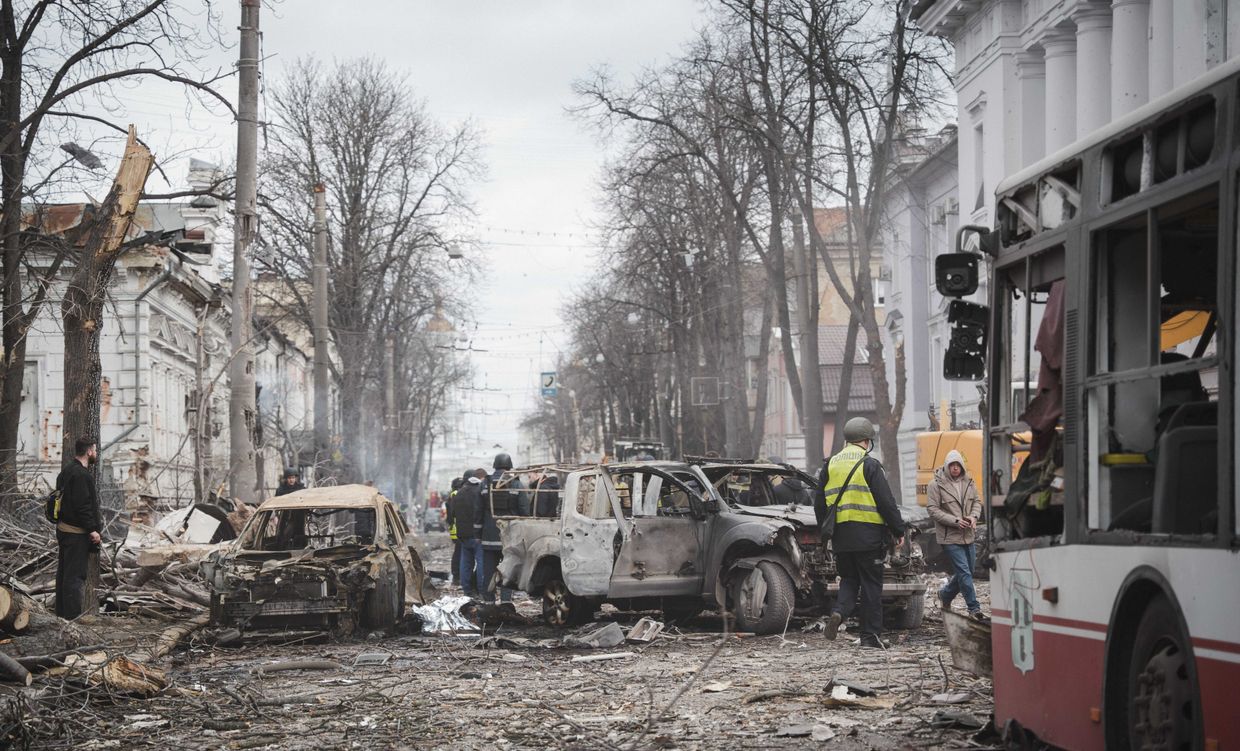 Emergency service workers on site after a Russian missile attack on Sumy. (Cukr media)
Emergency service workers on site after a Russian missile attack on Sumy. (Cukr media)
This disconnect between rhetoric and reality extended to Russian Foreign Affairs official Alexei Polishchuk, who spoke of Russia’s willingness to engage in negotiations while simultaneously defining their parameters in terms that would amount to Ukraine’s surrender. He articulated Russia’s insistence on addressing the conflict’s so-called “root causes”—code for Moscow’s pre-war demands that would effectively dismantle Ukrainian sovereignty.
The diplomatic dance continued with Polishchuk dismissing any possibility of international peacekeepers, declaring the concept “not on the agenda” despite growing calls for independent monitoring of any potential ceasefire. Both he and Peskov accused Ukraine of violating the energy infrastructure strikes moratorium, claiming over 60 violations since March 18 without offering evidence.
As if to complete the circle of contradiction, the Russian Ministry of Defense alleged that Ukrainian forces had shelled two power facilities in Belgorod Oblast—accusations that seemed designed to distract from Russia’s own deadly attacks on Ukrainian civilians.
A Chorus of Condemnation Meets a Wall of Silence: International Reactions Diverge
The blood that stained Sumy’s streets prompted a cascade of outrage from European capitals, where leaders did not mince words about the nature of Russia’s Palm Sunday massacre.
European Council President Antonio Costa labeled the attack “criminal,” while German Chancellor-elect Friedrich Merz went further, describing it as a “serious war crime” and noting the particularly sinister “double-tap” strategy where a second strike targeted first responders. “That is the response, that is what Putin does to those who talk with him of a ceasefire,” Merz observed bitterly.
British Prime Minister Keir Starmer declared himself “appalled” and called for Putin to “agree to a full and immediate ceasefire without conditions.” EU Representative Kaja Kallas highlighted the “horrific example of Russia intensifying attacks while Ukraine has accepted a ceasefire proposal.”
The response from Washington struck a markedly different tone—one of sympathy without consequences. U.S. Special Envoy Keith Kellogg acknowledged the attack “crosses any line of decency,” while Secretary of State Marco Rubio described it as a “tragic reminder of why President Trump’s administration is trying to end this war.” Ambassador Bridget Brink confirmed Russia’s use of cluster munitions but avoided calls for additional pressure on Moscow.
This divergence in diplomatic language underscored the growing rift in Western approaches to Russia—European leaders pushing for accountability while American officials emphasized peace talks even as Russian missiles fell on civilians.
The Dragon’s Shadow: Chinese Military Presence Behind Russian Lines Revealed
The blood-soaked streets of Sumy weren’t the only revelation on April 13. Reuters published a bombshell report that Chinese military officers have been operating behind Russian lines with Beijing’s explicit approval, according to a former Western intelligence official.
While more than 100 Chinese nationals fighting alongside Russian forces appear to be mercenaries without direct governmental ties, these officers are reportedly observing combat operations and gathering tactical intelligence—suggesting China’s interests in Ukraine extend beyond rhetorical support for Russia.
President Zelensky confirmed that “several hundred” Chinese citizens are fighting for Russia, with two recently captured in Donetsk Oblast. One captive reportedly paid 300,000 rubles (roughly $3,500) to a middleman in China in exchange for promised Russian citizenship.
Beijing’s official position—denying direct involvement and claiming to have urged its citizens to avoid armed conflicts—stands in stark contrast to these findings. China’s role as Russia’s leading supplier of dual-use components vital for weapons production raises further questions about the extent of its support for Moscow’s war machine.
No Safe Harbor: Russian Forces Strike Kherson and Odesa as Attacks Continue
As Sumy buried its dead, Russian forces unleashed deadly strikes on Ukraine’s southern cities, demonstrating the war’s unrelenting brutality across multiple fronts.
In Kherson, Russian artillery and drones targeted residential areas, killing three people and injuring two others. A 62-year-old woman perished instantly from shelling in the city center, while two other residents succumbed to their wounds in hospital after drone attacks. The shelling damaged a high-rise apartment building and several houses, with one home erupting in flames.
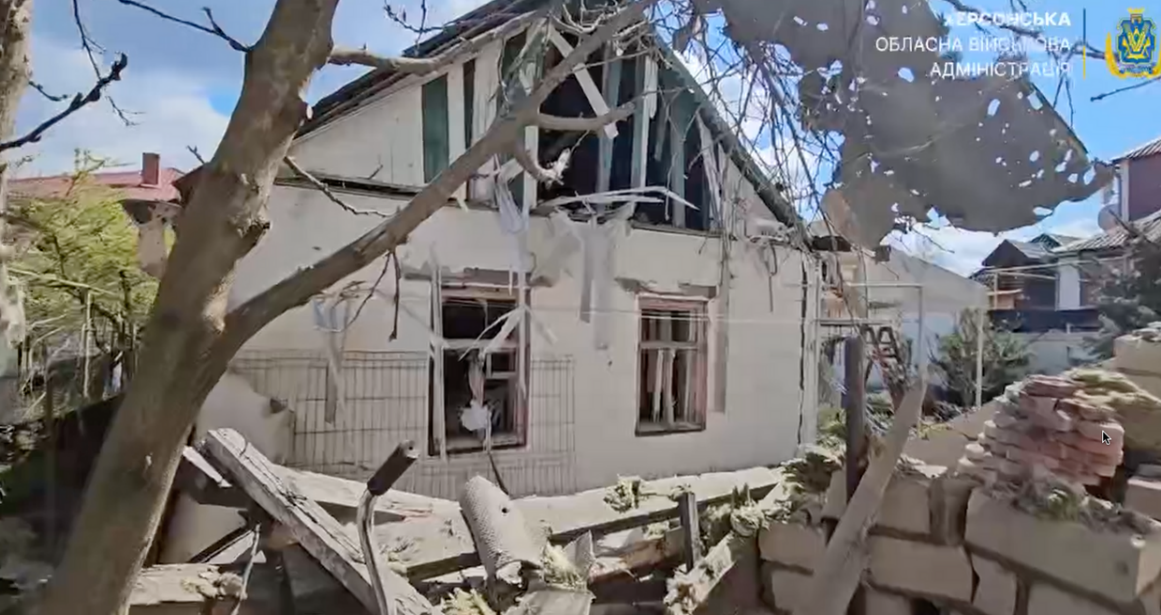 A home in Kherson damaged by a Russian attack. (Screenshot / Oleksandr Prokudin / Telegram)
A home in Kherson damaged by a Russian attack. (Screenshot / Oleksandr Prokudin / Telegram)
As darkness fell, Russian drones descended on Odesa, injuring five people and igniting fires across the historic port city. The strike damaged critical infrastructure including roadways, a car repair shop, and most alarmingly, a medical facility where the operating room suffered damage, though patients miraculously escaped injury.
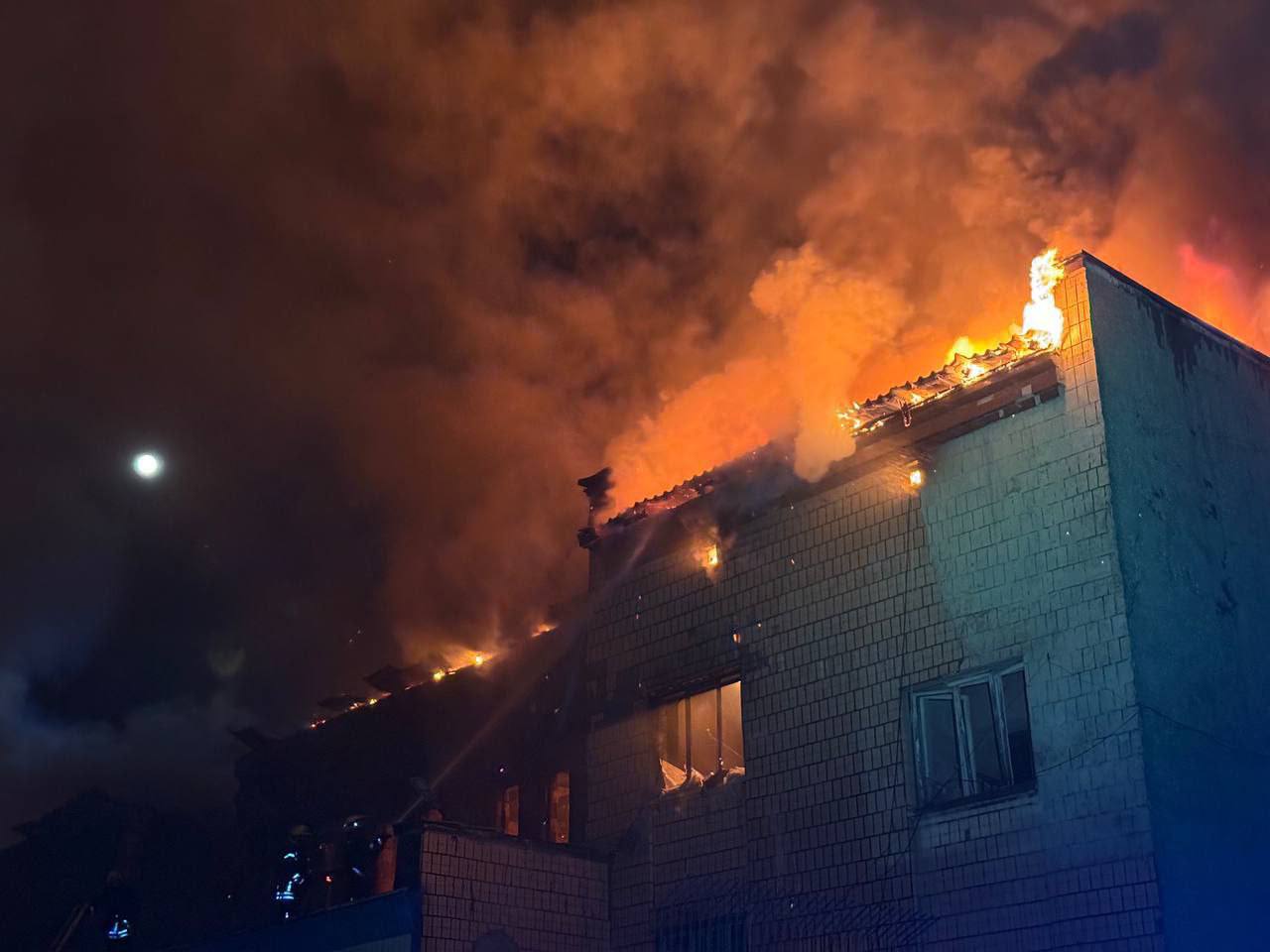 An aftermath of Russia’s drone attack on Odesa.
An aftermath of Russia’s drone attack on Odesa.
These coordinated attacks across Ukraine’s southern front laid bare Russia’s continued strategy of targeting civilian infrastructure and residential areas, even as its diplomats spoke of peace in international forums.
The Shifting Sands of Battle: Territorial Advances Across the Eastern Front
Away from the bloodied squares of Sumy and the shattered apartments of Kherson, the grinding combat of the eastern front continued its territorial ebb and flow.
Ukrainian forces pressed forward near the contested city of Toretsk, while Russian units advanced in three separate areas—near Kharkiv City, Borova, and Chasiv Yar. Geolocated footage captured Russian troops making marginal gains northeast of Tykhe, just outside of Kharkiv City.
The Ukrainian General Staff reported repelling two Russian reconnaissance groups along the international border—one northwest of Kharkiv City near Ridne and another northeast near Tykhe—evidence of Russia’s continued probing of defensive lines even as it claimed to support peace efforts.
These tactical movements, while limited in scale, revealed the unchanged reality beneath the diplomatic rhetoric: both sides continue to position themselves for strategic advantage, believing that battlefield gains translate to leverage at any future negotiating table.
Flames in the East: Explosion Rocks Orenburg as Black Sea Talks Announced
In a curious counterpoint to the day’s violence, an explosion rocked a thermal power plant in the Russian city of Orenburg, sending flames into the April sky and cutting electricity to surrounding neighborhoods. Russia’s Emergency Services Ministry quickly attributed the fire to a “short circuit” at a transformer substation, though no casualties were reported.
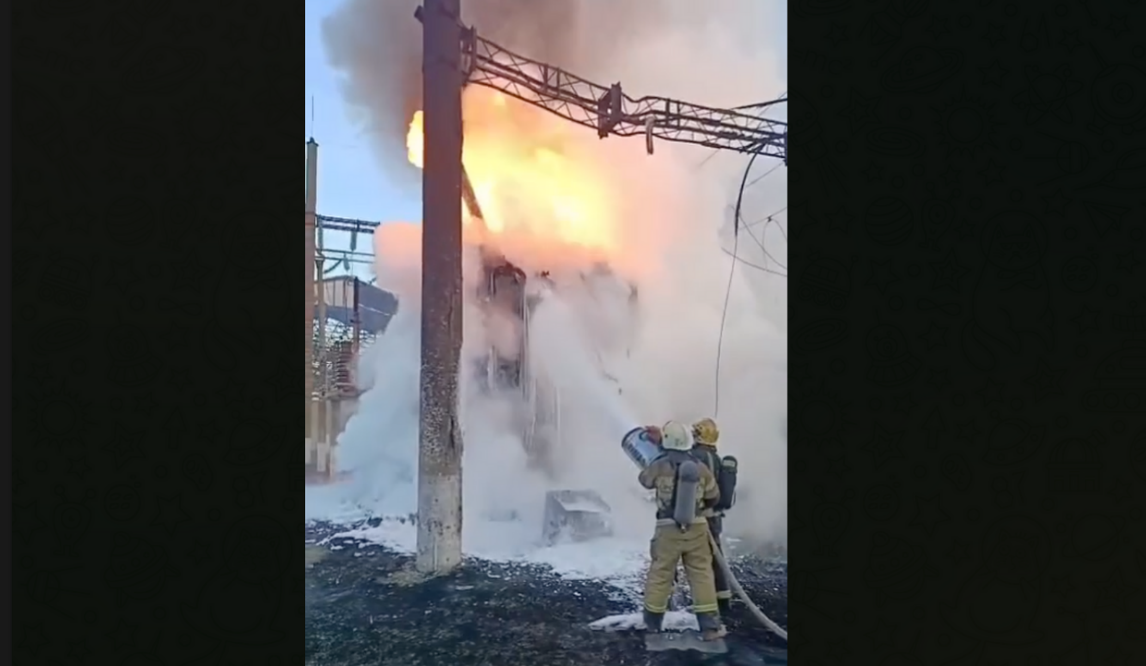 Firefighters extinguishing the blaze at the Orenburg thermal power plant in Orenburg, Russia. (Press center of the Main Directorate of the Emergency Situations Ministry of Russia for the Orenburg Region/Telegram)
Firefighters extinguishing the blaze at the Orenburg thermal power plant in Orenburg, Russia. (Press center of the Main Directorate of the Emergency Situations Ministry of Russia for the Orenburg Region/Telegram)
The incident joins a growing list of unexplained fires and explosions at Russian energy and military facilities in recent months, some of which have been unofficially linked to Ukrainian long-range strike capabilities.
As smoke rose over Orenburg, Turkish media outlets announced that Ankara will host a Black Sea security meeting with Russian and Ukrainian representatives on April 15-16. The high-level talks at Turkey’s Navy Command headquarters will focus on maritime security after any potential ceasefire, with military representatives from other regional powers expected to attend.
Turkey’s positioning as a mediator between the warring parties highlights its strategic importance in the Black Sea region and its careful diplomatic balancing act, maintaining relationships with both Moscow and Kyiv throughout the conflict.
The Path Forward: Faith Tested on the Bloodiest of Holy Days
As Palm Sunday drew to a close across Ukraine, the traditional blessing of willow branches—symbols of Christ’s triumphant entry into Jerusalem—took on new and painful significance. For many Ukrainians, the day became a brutal reminder of the gap between diplomatic platitudes and battlefield realities.
The missile strike on Sumy, with its deliberate targeting of civilians during religious observances, demonstrated the moral vacancy at the heart of Russia’s war machine. Yet despite the day’s horror—or perhaps because of it—Ukrainian resolve remained unbroken.
 Firefighters battle a blaze in Sumy after Russia’s deadly Palm Sunday missile attack. (State Emergency Service of Ukraine/Telegram)
Firefighters battle a blaze in Sumy after Russia’s deadly Palm Sunday missile attack. (State Emergency Service of Ukraine/Telegram)
While negotiators prepare for talks in Ankara and diplomats exchange statements of outrage or condolence, the fundamental questions of the war remain unanswered: How can peace be achieved when one side targets churchgoers? What monitoring mechanisms could possibly constrain a power willing to massacre civilians even as it speaks of peace? And what justice awaits those who transformed a holy day into a hellscape of flame and death?
As emergency workers continued to sift through the rubble in Sumy’s shattered center, these questions hung in the air alongside the smoke—a reminder that the path to genuine peace remains steep and treacherous, paved with the bodies of innocents whose only crime was to observe a holy day in a country that dared to claim its independence.
